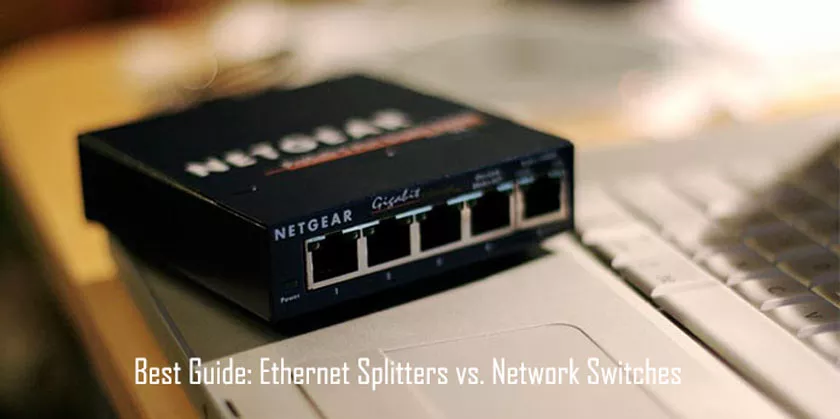Ethernet Splitters vs Network Switches: The term splitter gets thrown around pretty often when it comes to cables. The average splitter works by taking an input signal and dividing it into multiple output signals.

For example, on a two-way splitter, each output will have half the normal strength since the signal is divided by two. However, this is not how ethernet signals work.
Ethernet Splitters vs. Network Switches
Simply put, ethernet signals cannot be divided the way audio/video signals can. There are devices calledethernet splitters, but they work differently from other kinds of signal splitters. However, a different device called anetwork switchcan be used with ethernet cables for the same effect.
Ethernet Splitters

Ethernet splitters allow users to run one cable instead of two through walls, floors, and ceilings. But in the rooms your equipment is in, users will still need two cables. To facilitate this, ethernet splitters must be used in pairs.
For example, say you have an Internet router in Room A and need to connect hard lines to a computer plus a printer in Room B. But each room only has one ethernet jack in the wall. You would take two cables coming out of the router and connect both to your first ethernet splitter.
The other side of the splitter will connect to the wall jack in Room A. Then you do the same thing in Room B, connecting the computer and printer to the other splitter and then hooking that to the other wall jack.
While these great at doing the job they were designed for, they do not split a single ethernet line. Something that does split an ethernet line is what people stumbling upon ethernet splitters are usually looking for. To do that, users need to use a network switch instead.
Ethernet Network Switches

Network switches are connected to an Internet modem or router. The switch has several ports, allowing users to hook up multiple computers or other machines. But all those machines are still connected to the Internet through the same, single modem/router port, so how exactly does that work?
As stated above, ethernet signals cannot be split like audio/video signals. As a workaround, network switches do the next best thing by switching the signals back and forth (hence the name) at high speeds.
Say you have two computers connected to a network switch, one watching Netflix while the other one checks emails. Both computers are pulling their Internet signal from the same source and only one computer is technically connected to the Internet at a time.
The switch just goes back and forth between the computers, giving them turns at Internet access. But this happens at lightning-fast speeds, with many signal switches occurring every second. To the naked eye, this is barely noticeable.
As more machines are hooked up to a single switch, it is possible that the Internet speed can start to lag behind and slow things down. Most people have probably noticed at one point or another that using more machines at once can make things slower for everyone.
It largely depends on what each machine is doing. A group of computers all streaming movies will use a lot more data and slow each other down more, than a group of machines reading news articles. The level of lag (if any) is also going to depend on what Internet speeds you are paying your ISP for.
Main pros and cons of Ethernet Divider and Ethernet Switches:
Ethernet divider
- + It should be the cheapest.
- + Passive; does not require a power supply.
- – Limited to provide one additional port, 100MBit/sec
- – The destination switch/router must have two free Ethernet ports
Switch 100MBit/s
- + Potential for many additional Ethernet ports
- – Requires several settings
- – Requires power supply (unless supported by PoE)
Gigabit Switch
- + Higher bandwidth
- – Most expensive
- – Requires the rest of the network (LAN) to support Gigabit to get benefits
Center
- + Relatively inexpensive, but …
- – … not much cheaper than a switch
- – Very poor performance, especially when network load increases (due to collisions)
- – \ + It may or may not require a power supply
I hope that now you are clear on Ethernet Splitters vs. Network Switches. If still, you feel any question, comment us in the comment box.
